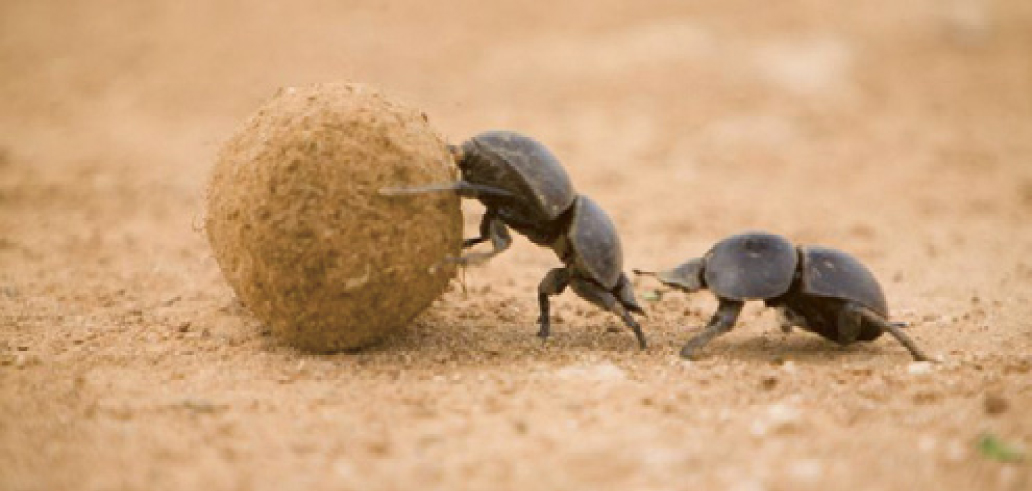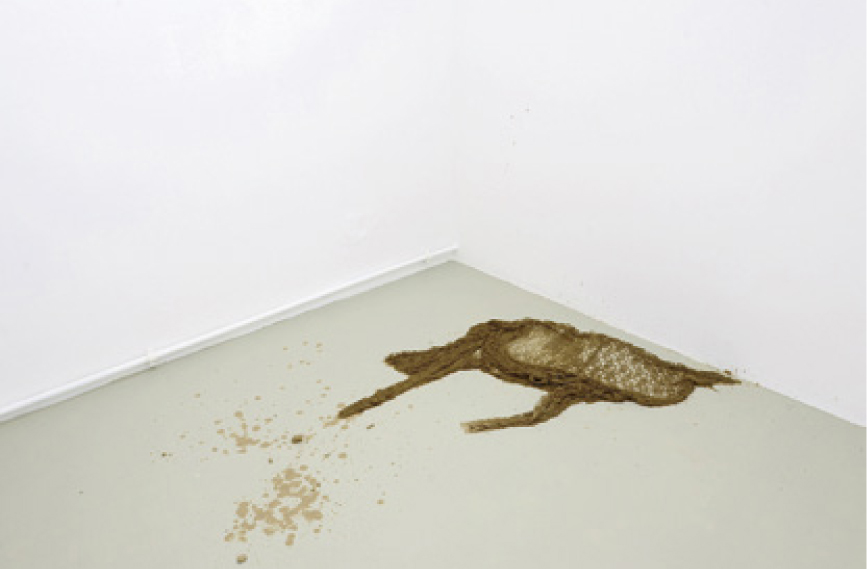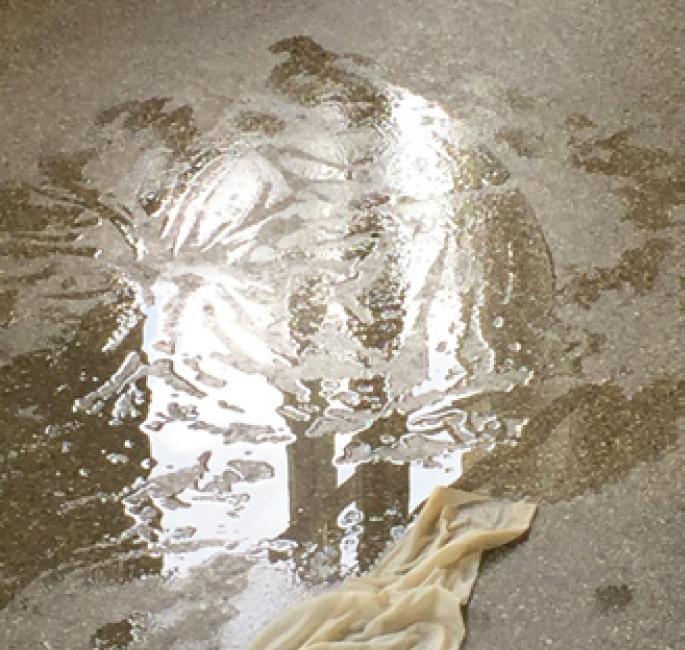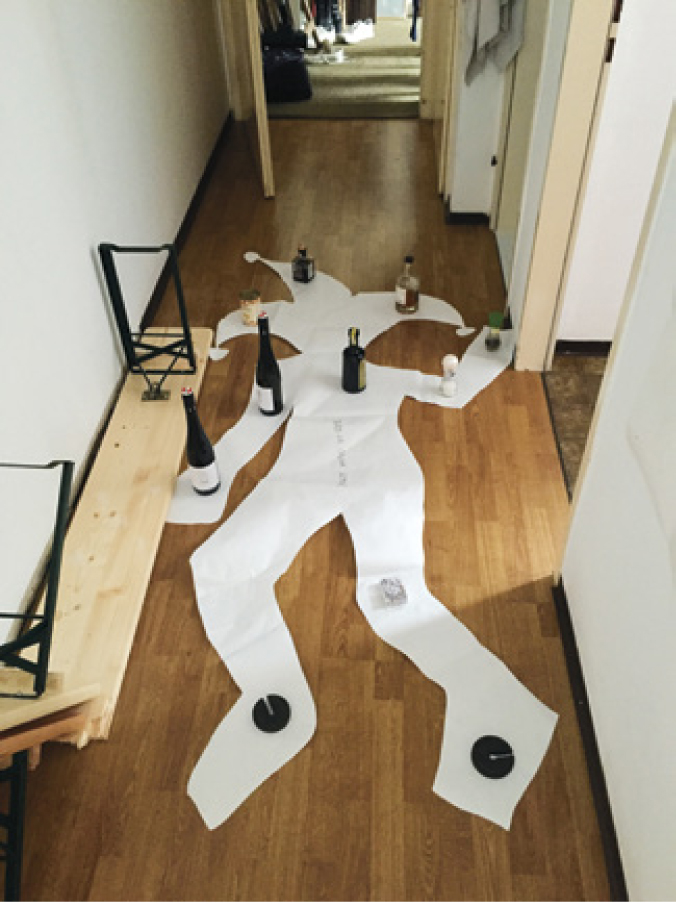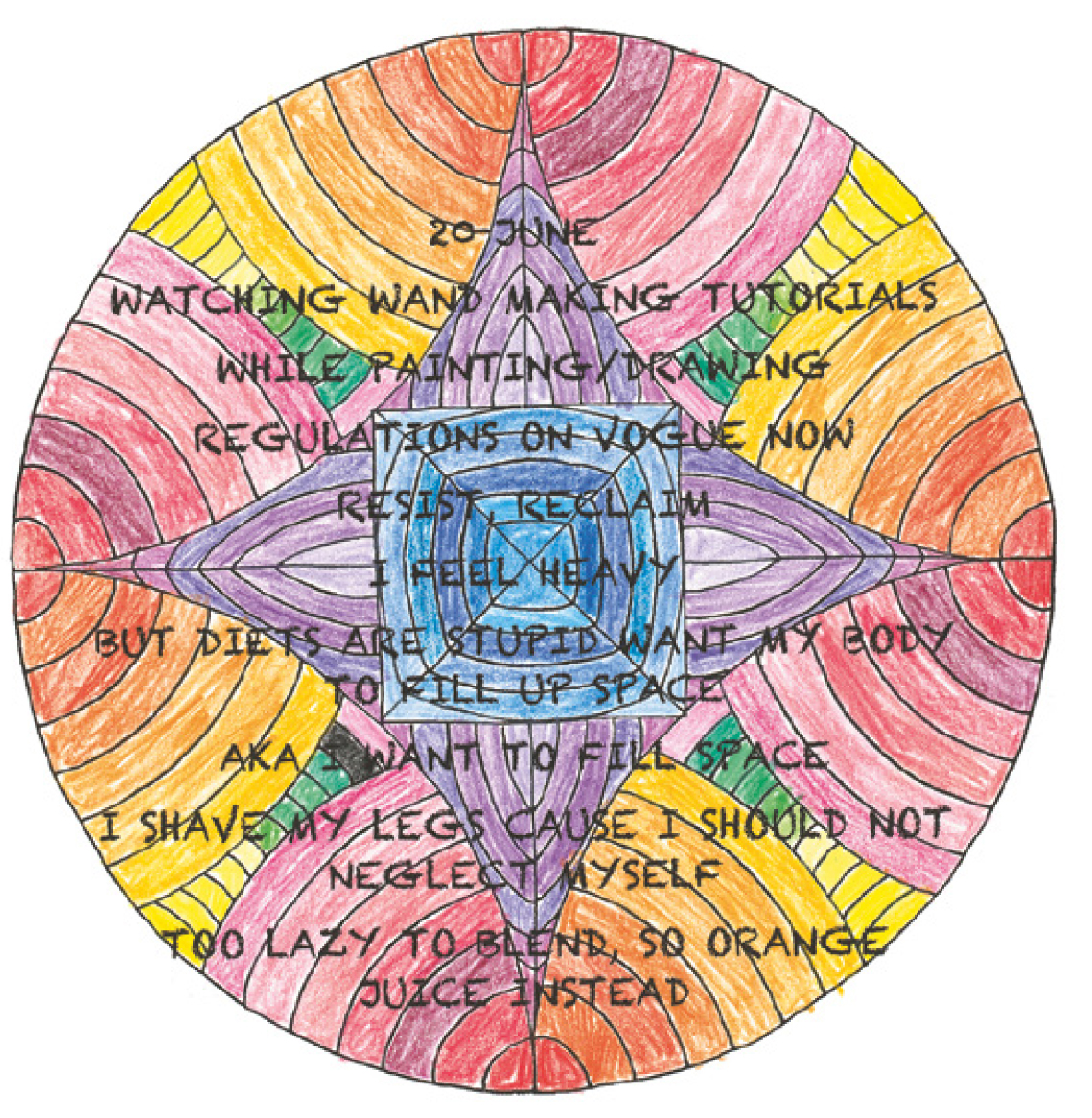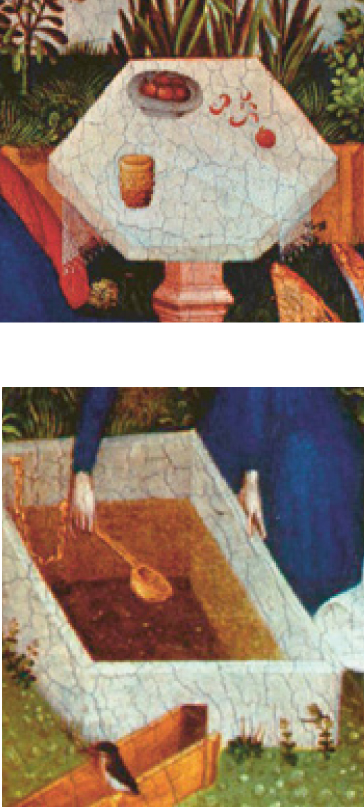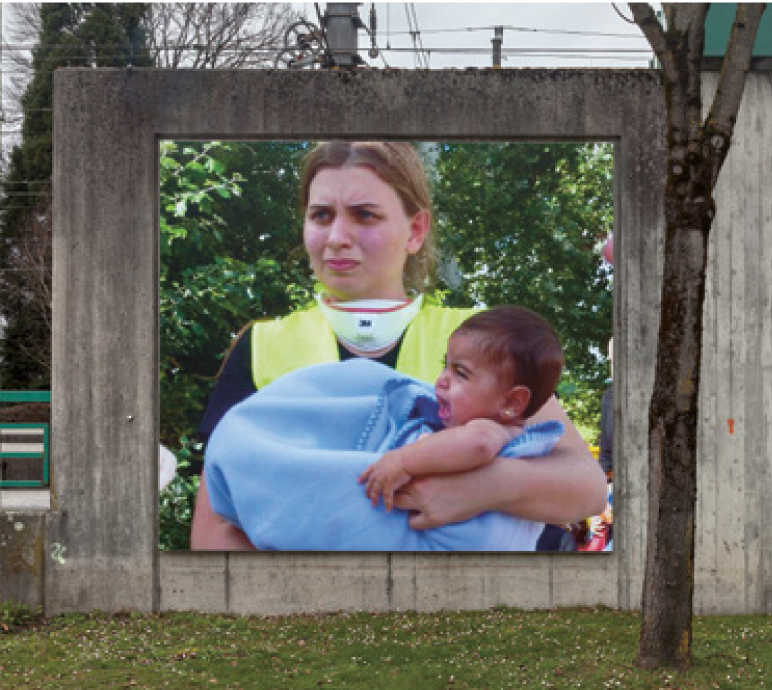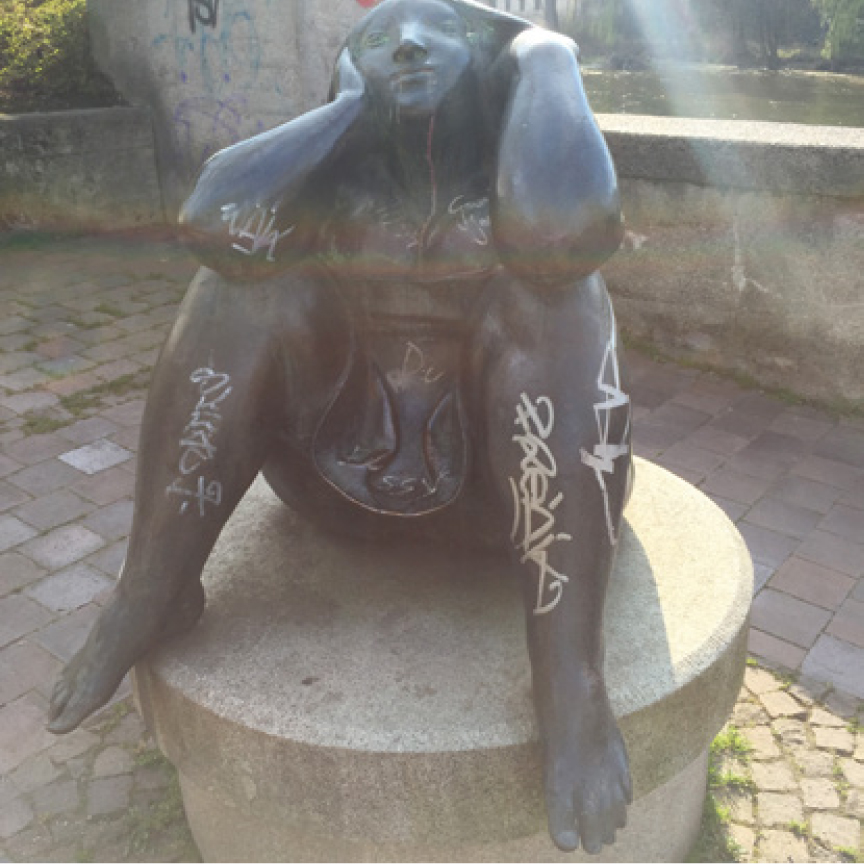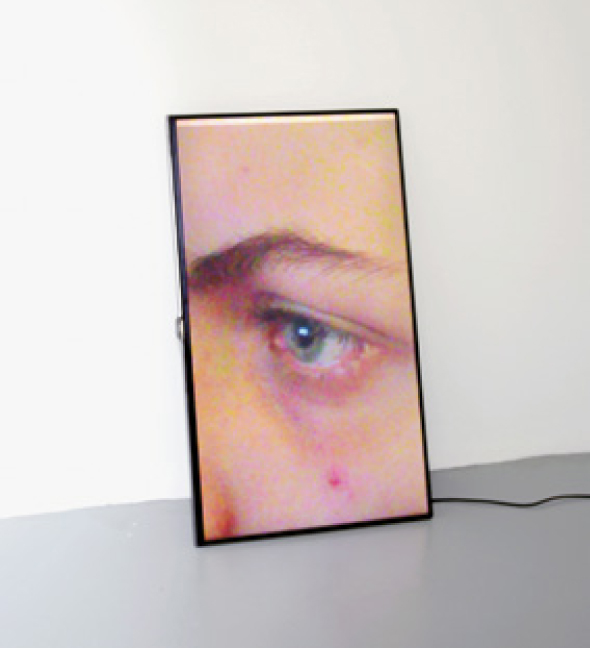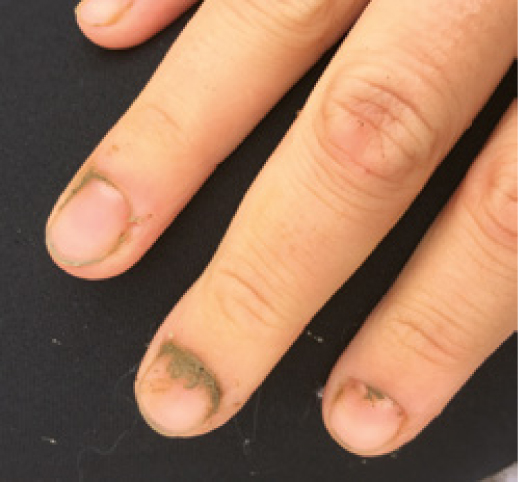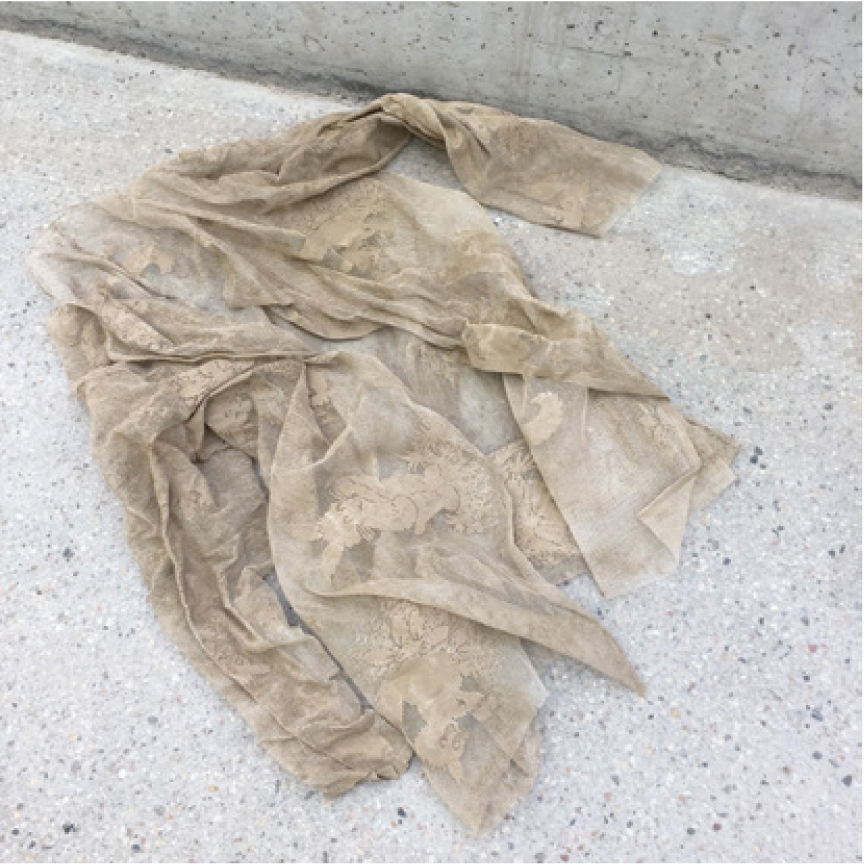The relevance of the portability of the artwork anticipates changes to its environment. Likewise, a floor-based installation can be seen as the natural consequence of refusing to create auxiliary structures, hangers, joints, mounts, brackets, attachments, clamps, etc.
The traditional image vs. art controversy seems to fall short in describing the intertwined mutual relationship between the objects I make and the imagery that reciprocally shapes their material existence. Images as representations comprise new works of art; thus representational material can achieve the value of an artwork when appointed as such. Yet an object with its history of making, its material complexity, and unspeakable oneness is forever changed as much as when the object is translated into an image as it is when it is described through a word. The semiotic threshold is a powerful trap over which I jump back and forth, alternately escaping and enjoying ambiguity.
—
It is rather hard for me to make hard things, solid, un-collapsible things that have not existed before. Making them worries me since I feel strange adding to the production line of uselessness. I cannot really think them.
I could cry when trying to make a table. Instead I make a very small piece, an earring based on a pea. The piece satisfies me because it is so hideously small, as if it needed protection. Yet a pea is incredibly resistant, probably needing less care than the table that I cannot make.
Large things propose large processes—for example, a group of people to lift them, a big place to give them space, organization, technology, cranes. Likewise, big places sometimes tend to make things grow, like how aquarium sizes impact fish.
Martyn had a point when he said some things can just be scaled to size. I find my work can hardly be scaled because it almost always has a definitive size. If I scale the objects, they fall apart, becoming their own travesty.
Many of my works are soft, but I am not indecisive about shape at a certain point in time. Clothing and textiles attract my attention because of their collapsibility. I like to connect form and situation, and while that would not contradict a solid object per se, the capacity to mutation is also one of adaptation. Things that adapt to bodies, to floors, to rooms, to images have a value but also a danger. What makes them fit for a transient reality also makes them compliant. Yet again, it makes them resist certain parameters of commodification.
As I travelled to install a show, I had a
work in my backpack; another time, I had
work in my handbag.
These collapsible works produce new images each time wherever they go. They perform for the camera; they are unstable. I wonder if they lack integrity. While the solid object often scares me, it naturally also attracts me.
—
I dipped the silk in water, first because I needed to add some weight, even if temporarily. The textile became the host for the water and gave shape to something invisible. Then I wanted more, to make the liquid visible and to leave a permanent trace on the textile. Like an actual testimony to what had happened, to the situation, the action, I guess. Thinking about it, paint was never an option. I first tried sticky stuff, like sugar and starch, but that wasn’t very nice. I thought about the difference between the wet and the driedout state and the connecting time-based process. First wet then dry and ready to go back into my handbag, but I wasn’t satisfied. Wet and dry had me think of crusts, and crusts reminded me of lace.
I thought of the mud cakes I made as a child. Mud itself is beautiful. It is not earth I am interested in. Mud is earth and clay. It is creamy, and when used right, it looks like chocolate. We would coat leaves and all kinds of things with it. But also, mud is unavoidable. In April nobody escapes it. Dogs with half their bodies chocolate-colored run all around the city. In the city, mud is created by pedestrians and users of parks. Mud puddles appear because rain makes the lawns weak and we always walk the same paths. It becomes symbolic for groups of people, masses of bodies treading the ground at festivals and temporary refugee camps alike, bodies drenched in mud, splashes all over clothes.
As usual there is also a bright side. The mud pit for pigs. Watch a rhino or an elephant bathe in mud! Nothing is more satisfying to witness, while it is also protecting, cooling, and soothing skin exposed to sun and weather. The mud coats work nicely now that the liquid became its own sculptural aspect next to the textile. Both impose on each other while I can still fold up the dried-up mud coat. The process has stained it permanently even when washed—the color has irrevocably changed to an earthy, coffee-tea-leaf tone.
Stains signify time best, the only clock
I choose to read.
Then I dipped them in concrete. Funny how I end up with indexicality again. At the heart of a hard, dried-out concrete shell is still a once soft piece of fabric. The trace of the softness of the fabric produced the shape. I hang it from a line letting them dry hanging. But now I cannot go back.
I spend one day thinking about making a mold. I cry over the potential loss of the original, which bares in its core the trace, even though it doesn’t expose it. Isn’t it the shape that matters? If I had a mold, I could make many identical ones in many different colors and materials. I could stack them too, which is a nice capacity to have.
an evolved product of concordance and
compromise
—
I am thinking of things as extended and solidified desires, signs of human suffering and wanting, signs of their dominion or domination, expressions of the illusions, of images and appearances. This is why they arouse our love and hatred.
I have been wondering about this German word Zartgefühl for a few weeks.
I like it, since there is no direct translation to English (or so I think). Spending time between two or more languages is a state of heightened senses in itself.
Among other words when searching are: sensitivity / tenderness / delicacy / empathy (also discretion sometimes).
All of which is not what it is.
There was one Google result that came closer, which was »tender emotion.« I kind of liked it.
If I try to explain it:
Zart = tender / soft / lightly
The petal of a flower can be zart
In between fragile and fine
But a touch can be zart as well
Like, yes, I guess, »a tender touch«
Then Gefühl = feeling / emotion
But the beauty actually lies within the full meaning of Zartgefühl, at least in how I understand it as a German word. It is just as much the subjective fragile feeling of sensitivity, less high sensitivity than maybe a feeling for the small and fragile, the unobvious perhaps, the subtle, while at the same time it describes the capacity to perceive another being’s subtle emotions and react accordingly. In that sense, it applies a capacity of caring and taking care, treating someone in respect of their delicate feelings delicately.
So while one owns the quality of Zartgefühl as a passive perceptive sensitivity, one can also actively act with Zartgefühl towards somebody.
Written by Anna-Sophie Berger
OFluxo © 2017
